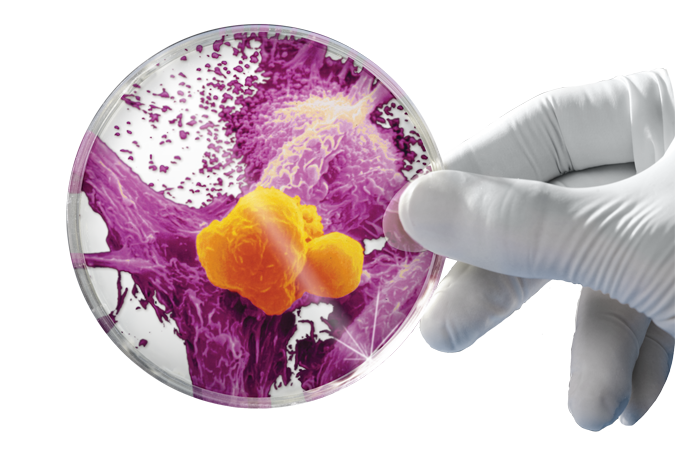What is Asthma & how is Ayurveda helpful in treating?
Asthma is a chronic inflammatory disorder of the airways characterized by airways obstruction, airways hyper-responsiveness, excessive mucous secretion and cough. A patient of Asthma feels uncomfortable in breathing. Difficulty in breathing may be due to allergic reactions or use of causative factors, which we describe in this article. Nowadays asthma is amongst the most common chronic diseases worldwide. The prevalence of asthma has increased considerably over the past 20 years, especially in children. Bronchial Asthma is one of the distressing diseases which are relatively widespread in all the socio-economic groups of all the age groups and approximately all over the world.
Asthma finds its mention in Ayurvedic texts by the name of Swasa Roga. Ancient texts of Charak Samhita holds Asthma as a disease which is difficult to cure. Asthma has been categorized into five types. Symptoms of tamak shwas’s are almost the same as of bronchial Asthma. So Ayurveda refers toBronchial Asthma as Tamaka Swasa. Bronchial asthma is chronic debilitating disease of diverse aetiology which is characterized by recurrent attacks of breathlessness and wheezing, which vary in severity and frequency from person to person. Tamaka Swasa is analogous to bronchial asthma due to similarity in symptoms, onset, causes, precipitating factors and pathogenesis.
The book “Asthma (Swasa Roga) and Ayurveda” written by the well known author – Professor Ajay Kumar Sharma is a complete and comprehensive treatise on the subject. The author of the book is a senior professor of Ayurvedic medicine (kayacikitsa) in national Institute of Ayurveda in Jaipur, India and a reputed teacher, clinician and researcher, his book has been richly benefited by his scholarship and professional experience. In this book the problem of asthma have been described by various acharyas (scholars). Among them Acharya Charaka, he discussed the various nidana (causative factors) which directly or indirectly act as triggers for tamaka swasa (Bronchial asthma) as exposure to various allergens and irritant gases (dust, smoke), excessive physical exertion, undue exposure to cold air and water, rough food, irregular meals, too much fasting, general debility, excessive use of purification procedures like vaman and virechna, prolonged stage of diseases like diarrhea, certain drugs and distressing emotional circumstances etc.
So, let us understand what are the main triggers of causing Asthma?
- In modern life, it is easy to acquire lots of toxins. Garavisha (pesticides and xenobiotics) in the food we eat, in the water we drink and in the air we breathe build up in the liver and tissues of the body.
- Weak digestion, due to lack of exercise and bad food also makes toxins build-up in the system. Regular consumption of processed foods, leftovers and heavy foods cooked without spices causes semi-digested material (ama) to accumulate in the body and to slowly become chemically a charged toxin (amavisha).
- Toxic emotions, skipping or delaying meals and type-A behavior all create reactive toxins (amavisha) immediately in the system.
- Electromagnetic radiation (indravajravijanyavisha), disturbs the subtle vibrational intelligence of the body, weakening digestion and metabolism, constricting the channels of elimination and creating a cascade of chemical toxicity in the body.
All of these toxins place a heavy load on the liver and kidneys. If the liver gets backed up with toxins, and toxins spill over into the blood and tissues of the body, the immune system can easily become overtaxed and confused.
The highly reactive nature of amavisha (free-radicals and strongly acidic toxins) easily damages or kills normal cells in the body, which the immune system then has to clean up. If there is a great abundance of toxins floating in the blood, the effects of these reactive toxins on the tissues will be widespread, and the immune system will become overactive in its attempt to maintain order. This is a fertile ground for acquired intolerances.
What is acquired food intolerances?
When you combine an overactive immune system with poor digestion and metabolism, acquired food intolerances are a natural result. When a person with an overactive immune system eats certain foods that he or she has trouble digesting, such as wheat or milk, the body produces ama (semi-digested material). All of us produce this kind of ama when we cannot digest something well. But for a person with an overactive immune system, the particles of ama (thick, heavy, sticky material) are immediately attacked by the immune system, which gives an allergic reaction.
Daruharidra (Berberis aristata/ Indian Barberry), when used in proper combination with other herbs, is able to support the immune system to regain balance. If, at the same time, you slowly improve digestion and gradually detoxify the blood and liver, the immune system will eventually return to a normal, relaxed state and the acquired intolerances will disappear.
So, nowadays the WHO recognizes Asthma as a major public health problem caused by a combination of genetic and environmental factors. Various trigger factors such as dust, fumes and pollen grains along with genetic factors have been studied and investigated which have immensely helped in managing the disease. The pathogenic mechanisms of asthma include the infiltration of leukocytes and release of cytokines in the respiratory tract resulting ultimately into a transient obstructive pulmonary disorder.
Modern management of Asthma includes prevention by avoiding exposure to the triggering factors and pharmacologic intervention. Asthma being a chronic inflammatory disease of airways with unheralded acute attacks requires specific medications classified into fast-acting and long-acting categories. The most commonly used antiasthmatic drugs are – salbutamol, terbutaline, theophylline, tiotropium bromide, montelukast, corticosteroids etc. These synthetic drugs are used to treat acute symptoms of bronchial asthma as well as for long term control to prevent exacerbations. Yet these have safety issues especially when employed for long term use due to their various adverse effects. In this scenario, use of herbal medications as documented in Ayurveda for Swasa Roga can prove helpful in form of adjuvant or maybe even as primary therapy for asthma. Many related research works has been carried out in this direction using traditional medicine with encouraging results.
In Ayurveda, the prognosis of Tamaka Swasa, a disease of prana vaha srotas (according to Vagbhat, “Prana vaha srotas’ chief organs are hridaya (the heart) and maha srotas (alimentary tract)), is said to be sadhya (curable) in its initial stage of onset if diagnosed and treated promptly. Otherwise as time elapses it becomes yapya (a disease controlled only by regular use of medicine). Further, its Ayurvedic line of treatment includes Vamana and Virecana (Sodhana Chikitsha) followed by Pathya, Dhumapaana of medicated drugs, Leha and other Shamana Chikitsha. Shamana Chikitsha is a therapy of Panchakarma ayurvedic treatment (https://www.vedichealers.com/), which is also known as palliative type of treatment.
Dos and Don`ts for Astmatic people:
- Avoid being in cold area. Use of cooler or A.C is not good for patients with Asthma.
- Use of liquid diet is harmful in Asthma.
- Taking water after meal is contradicted in Asthma.
- Using ghee after meal gives relief to the patients with Asthma.
- Taking of Godhum Shali rice is useful in Asthma.
- Taking polluted water enhances Asthma.
- Taking fish as food is harmful in Asthma.
- Use of Elephant foot yam is not good for patients with Asthma.
- Use of honey gives good result in Asthma.
- Taking rough, cold and heavy diet aggravates Asthma.
- Dust is the enemy for the patients with Asthma.
- Walking with heavy luggage is not good for the Asthma patients.
- Keeping a sufficient gap between meals and sleep is necessary for Asthma patients.
- Suppress the urge of urination, defecation, thirst and cough increases the intensity of Asthma.
- Asthma patients should avoid walking too much.
- Asthma patients should do fomentation on chest when the disease troubles them.
- Sleeping at day time helps the patients with Asthma.
- Use of cold water is harmful in Asthma.
- Taking bath with cold water in Asthma enhances its intensity.
Although asthma cannot be totally cured, appropriate management can control the disease and enable people to enjoy a good quality of life. Let us speak about herbs which show anti-asthmatic properties.
Many Ayurvedic herbs are used as antiasthmatics, such as Adhatoda vasica, Inula racemosa, Ocimum sanctum, Solanum xanthocarpum etc.
Acharya Charaka described ten important drugs for treatment of Asthma, such as Shati (Hedychium spicatum), Puskaramoola (Inula racemosa), Amlavatsha (Garcinia pedunculata), Elaichi (Elettaria cardamomum), Hingu (Ferula narthex), Agara (Aquilaria agallocha), Tulsi (Ocimum sanctum), Bhoomiamalaki (Phyllanthus urinaria), Jivanti (Leptadenia reticulata), Chanda (Angelica glauca). Acharya Sushruta also mentioned Surasadi gana (decoction of herbal oils, which should be used in drinks, massage, gargle, inhalation therapy) for treatment of Swasa.
Natural medicine provides many phytomedicines which represent a significant alternative for the management of this affection in many places around the world.
 In India Solanum xanthocarpum, Indian Solanum or Kantakari is used for the management of bronchial asthma. Solanum xanthocarpum, also known as the Thai eggplant, is a medicinal herb common in Bangladesh, Nepal and India.The Thai eggplant is a variety ofeggplant used in Southeast Asian cuisines. It is also cultivated in Sri Lanka and used in Sri Lankan cuisine.
In India Solanum xanthocarpum, Indian Solanum or Kantakari is used for the management of bronchial asthma. Solanum xanthocarpum, also known as the Thai eggplant, is a medicinal herb common in Bangladesh, Nepal and India.The Thai eggplant is a variety ofeggplant used in Southeast Asian cuisines. It is also cultivated in Sri Lanka and used in Sri Lankan cuisine.
 In Europe Inula helenium or Elecampane, has been used since the middle ages for its expectorant properties, it is known as a stimulant to the respiratory system and has long been used to treat asthma and chronic bronchitis. Inula also contains a volatile compound, alantolactone, in the oil that has antibacterial and antifungal properties. This herb was sacred to the ancientCelts, and once had the name “elfwort”.
In Europe Inula helenium or Elecampane, has been used since the middle ages for its expectorant properties, it is known as a stimulant to the respiratory system and has long been used to treat asthma and chronic bronchitis. Inula also contains a volatile compound, alantolactone, in the oil that has antibacterial and antifungal properties. This herb was sacred to the ancientCelts, and once had the name “elfwort”.
 Pushkar mool – Sanskrit name of Inula racemosa.Pushkar mool is a powerful bronchodialator and act as anti dote of histamine. According to Ayurveda Inula racemosa is the best drug for respiratory disorders such as pluersy, chronic cough, asthma and hiccough.
Pushkar mool – Sanskrit name of Inula racemosa.Pushkar mool is a powerful bronchodialator and act as anti dote of histamine. According to Ayurveda Inula racemosa is the best drug for respiratory disorders such as pluersy, chronic cough, asthma and hiccough.
 In Ivory Coast traditional medicine, air-dried powdered stem bark of Dichrostachys cinerea or Veerataru is used by inhalation for the treatment of the airways affection. Scientists support the use of Dichrostachys cinerea as antiasthmatic remedy, it showed therapeutic potential for the management of asthma. In Siddha medicine of the Tamils in southern India, Dichrostachys cinerea is called vidathther and used for gonorrhea, syphilis and eczema.
In Ivory Coast traditional medicine, air-dried powdered stem bark of Dichrostachys cinerea or Veerataru is used by inhalation for the treatment of the airways affection. Scientists support the use of Dichrostachys cinerea as antiasthmatic remedy, it showed therapeutic potential for the management of asthma. In Siddha medicine of the Tamils in southern India, Dichrostachys cinerea is called vidathther and used for gonorrhea, syphilis and eczema.
 Justicia adhatoda, commonly known as Malabar nut,Adulsa, Adhatoda, Vasa or Vasaka is a medicinal plantnative to Asia, widely used in Ayurvedic and Unanisystems of medicine. It is the Unofficial provincial flower of the Punjab province of Pakistan. This bush grows in all parts of the world and the bark, flowers, roots and leaves are used in medicine. Adhatoda leaves have been used extensively in Ayurvedic Medicine for over 2000 years primarily for respiratory disorders. The leaves enjoy a reputation as a useful remedy in the cure of coughs and bronchitis The main agents of the plant act as anti-asthmatic, antispasmodic and expectorant (an agent that promotes the discharge of mucous and secretions from the respiratory passages). Being a very good expectorant, it draws out all kapha (phlegm) accumulated in the lungs. In many cases where bronchitis is due to lack of appetite and poor digestion, the juice of Vasaka is mixed with the juice of ginger and honey and given in the early morning on an empty stomach.
Justicia adhatoda, commonly known as Malabar nut,Adulsa, Adhatoda, Vasa or Vasaka is a medicinal plantnative to Asia, widely used in Ayurvedic and Unanisystems of medicine. It is the Unofficial provincial flower of the Punjab province of Pakistan. This bush grows in all parts of the world and the bark, flowers, roots and leaves are used in medicine. Adhatoda leaves have been used extensively in Ayurvedic Medicine for over 2000 years primarily for respiratory disorders. The leaves enjoy a reputation as a useful remedy in the cure of coughs and bronchitis The main agents of the plant act as anti-asthmatic, antispasmodic and expectorant (an agent that promotes the discharge of mucous and secretions from the respiratory passages). Being a very good expectorant, it draws out all kapha (phlegm) accumulated in the lungs. In many cases where bronchitis is due to lack of appetite and poor digestion, the juice of Vasaka is mixed with the juice of ginger and honey and given in the early morning on an empty stomach.
 Datura Stramonium or Thorn Apple. Smoking of Dhatura seeds as a cure for asthma was known during the Vedic period. The leaves are burnt and the fumes are inhaled to take in the antispasmodic properties of datura. Traditionally, datura leaves were rolled and smoked to improve the symptoms of asthma. This herb is mainly used as a natural home remedy for respiratory diseases like whooping cough, asthma and bronchitis. Though it is a poisonous plant still datura benefits in healing spasmodic disorders and dealing with respiratory disorders, especially asthma. The leaves, seeds, and root of this plant have medicinal value.
Datura Stramonium or Thorn Apple. Smoking of Dhatura seeds as a cure for asthma was known during the Vedic period. The leaves are burnt and the fumes are inhaled to take in the antispasmodic properties of datura. Traditionally, datura leaves were rolled and smoked to improve the symptoms of asthma. This herb is mainly used as a natural home remedy for respiratory diseases like whooping cough, asthma and bronchitis. Though it is a poisonous plant still datura benefits in healing spasmodic disorders and dealing with respiratory disorders, especially asthma. The leaves, seeds, and root of this plant have medicinal value.
Other herbs, which are beneficial for asthmatic conditions:
Pimpinélla anísum Anis, Abutilon indicum Atibala, Indian Ephedra Bala, Achyranthes asperaApamarga, Ocimum Basil, Terminalia bellirica Bibhitaki, Bamboo manna, Eclipta alba Bringraj, Glycyrrhiza glabra Licorice, Leucas aspera Polpala, Phyllanthus emblica Amalaki, Morinda CitrifoliaNoni, Convolvulus pluricaulis Shankpushpi etc.
Conclusion:
Bronchial asthma is a chronic inflammatory disorder of the airways affecting a large percentage of people all over the world. Although wide ranges of drugs are available, the relief is mainly symptomatic and short lived. The available treatment options have major limitations owing to adverse effects. Herbs/Plants are always an ideal source of drugs. In the ancient times, traditional drugs of plant origin were used for the treatment of various diseases. As from various experimental and clinical studies, a number of Ayurvedic herbs have been reported that help in preventing asthmatic attacks without any side effects and gradually helps in recovering from asthma. So in this review paper, various such herbs with significant antiasthmatic activity are described.
More about Acharya Charak:
Born in 300 BC Acharya Charak was one of the principal contributors to the ancient art and science of Ayurveda, a system of medicine and lifestyle developed in Ancient India. Acharya Charak has been crowned as the Father of Medicine. His renowned work, the “Charak Samhita“, is considered as an encyclopedia of Ayurveda. His principles, diagnosis, and cures retain their potency and truth even after a couple of millennia. When the science of anatomy was confused with different theories in Europe, Acharya Charak revealed through his innate genius and enquiries the facts on human anatomy, embryology, pharmacology, blood circulation and diseases like diabetes, tuberculosis, heart disease, etc.
Health & Bliss…

























